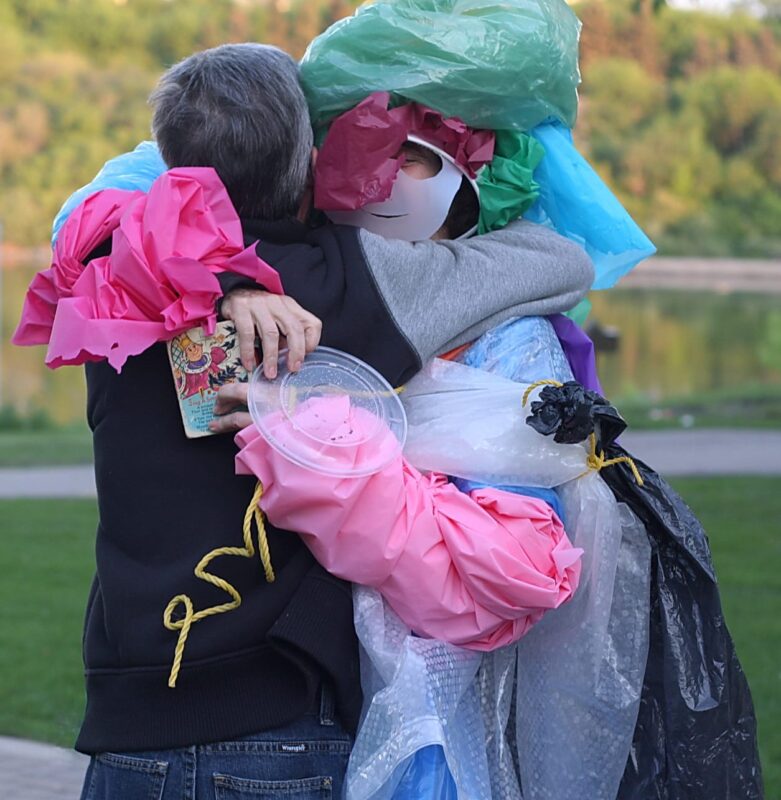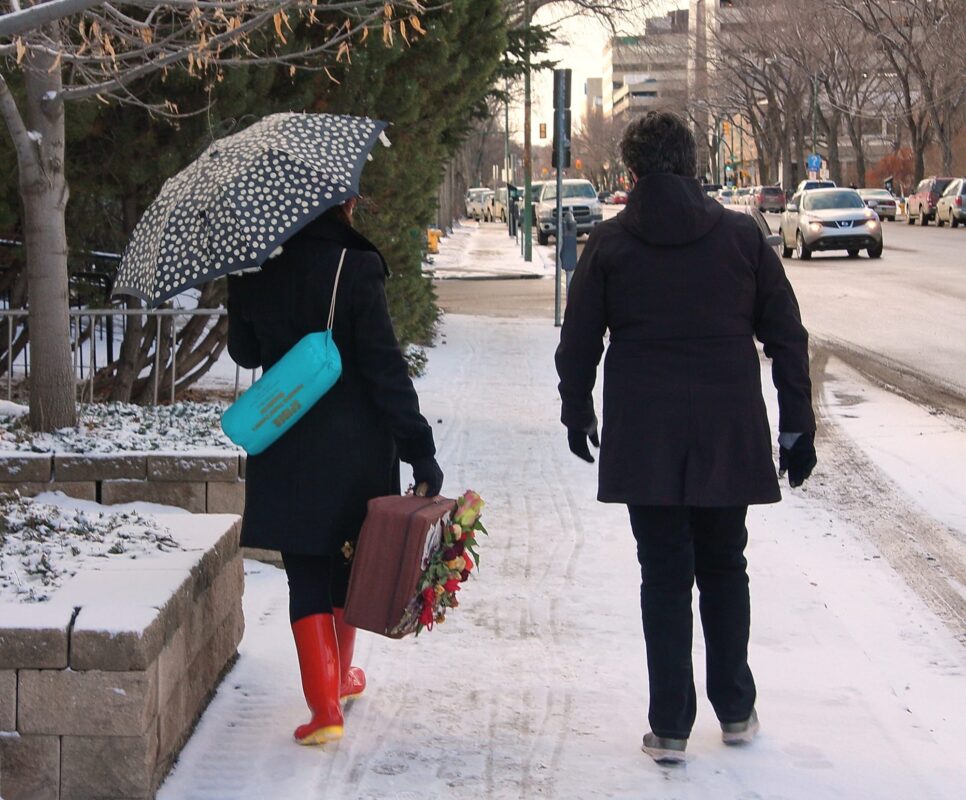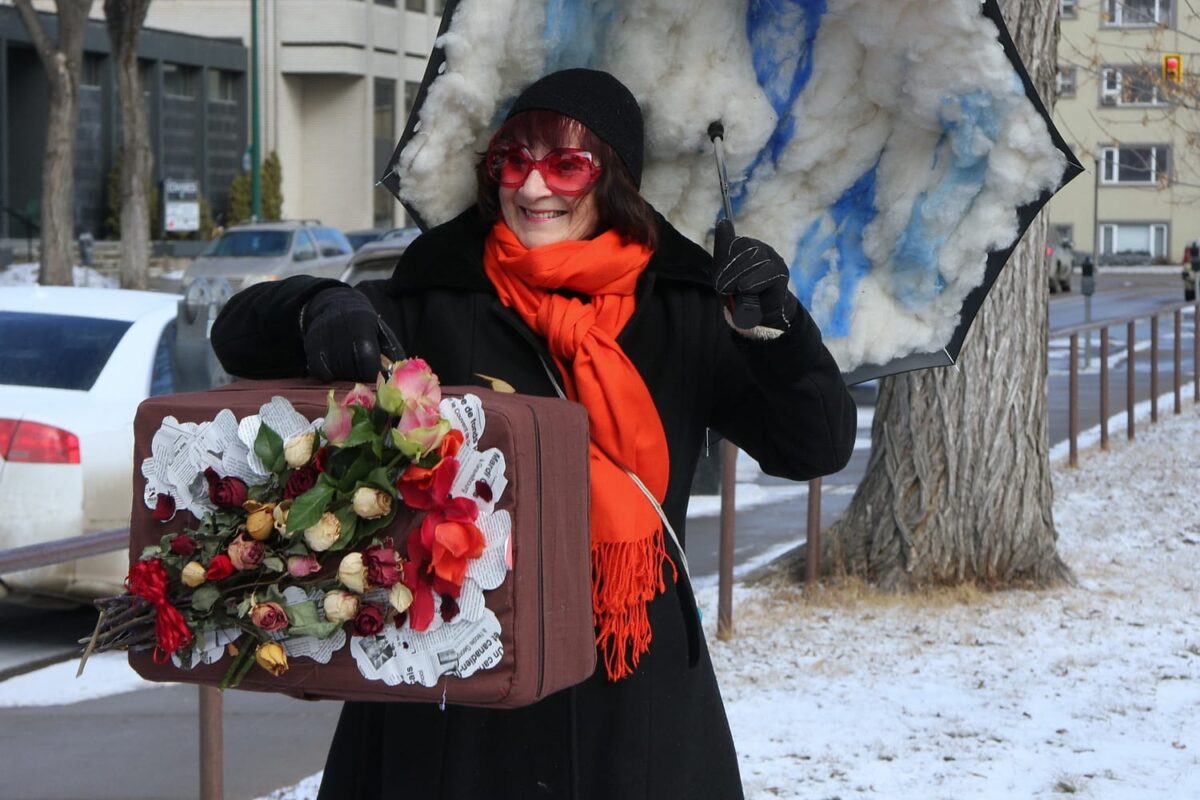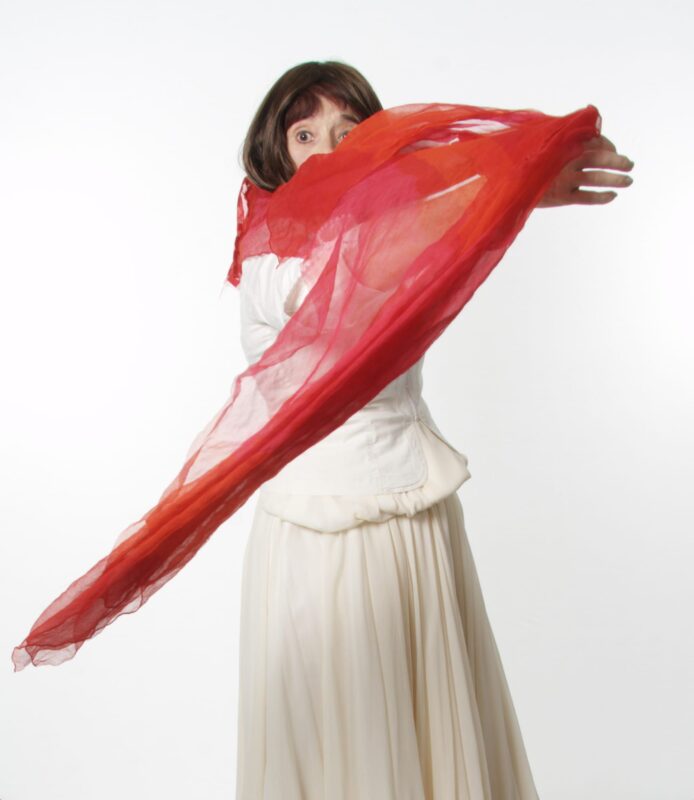Acadian Canadian performance artist Éveline Boudreau explores global themes in every performance. She has donned costumes made of plastic bags to draw people’s attention to the vast amount of waste humans create. She has wandered a stage filled with shoes that signified and commemorated female victims of domestic violence. Her work centers on issues surrounding identity, the importance of words and language in cultural and individual identity and what being a woman means in modern society and in historical times.
I met Boudreau almost four years ago when we both spoke at the Arts in Society Conference in Rome. During that time period, she was studying the role selfie-taking was playing in creating people’s identities. She spent many months talking to people taking selfies in parks, near monuments and artwork, and near historical sites. She discussed with them why they were taking the photos, where they were posting them and what they hoped to accomplish. Boudreau said, “In ephemeral moments, I occupy a space, communicate ideas and suggest a moment of reflection to my participants. I hope that by slowing down time and focusing, they will seriously consider and reflect on the situation/question I am posing”. She thinks that with the Internet and social media, we are “less and less real, and more and more on the interface, the computer screen. As we think we are getting closer to each other, we get further apart, which forces us to redefine our relationships to each other and to the world”.
Enlarge

Identity is important to Boudreau, as she is a survivor and member of a small francophone minority in bilingual Canada, originally from New Brunswick. She says, “I speak from the margins of society, hoping to reach people from both majority and minority, to consider ‘Who are they?’ and most importantly, ‘Who am I?'”
On March 8 of this year, for International Women’s Day, Boudreau invited me to fly to Saskatoon, Saskatchewan and spend the week with her participating in her “Dreamlands” performance art project. In the weeks leading up to the multi-day event, we chose twenty quotations about women and coordinating photos and made them into a booklet. Then, during March 8 and its surrounding days, we talked to and interacted with people all over Saskatoon, on street corners in the blustery, snowy cold, in stores and banks and cafes, and in pre-arranged performance spaces, such as the gallery room at the downtown main library. We gave the booklets as keepsakes to the audience/performers.
Enlarge
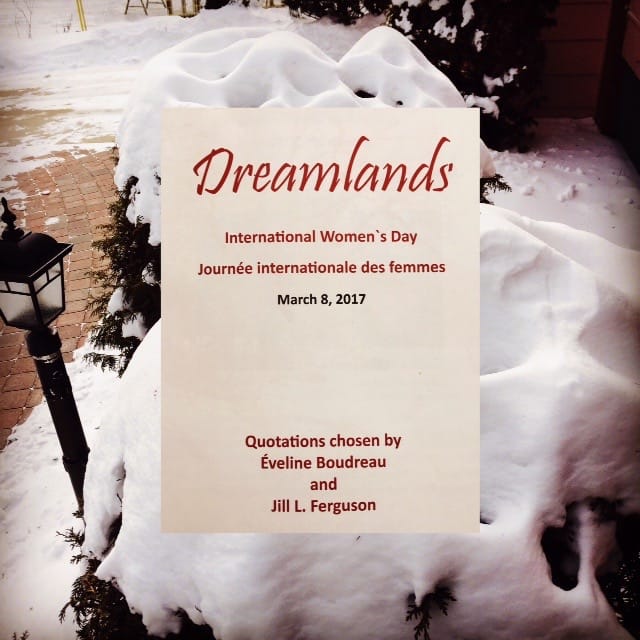
Boudreau calls this kind of a performance, “a spontaneous intervention”. She believes she is able to inspire social connections and feelings and thoughts for at least one brief moment. “My hope is that they may be imprinted for the rest of their lives,” she says, but she admits that what people take away from each performance is very difficult for her to evaluate.
Boudreau did not start her career doing this kind of art. Early in life, she studied to be a teacher and taught in both Canada and Germany. As a teacher, she decided she needed a leisure activity, and recalled a childhood memory of seeing pottery making in a film in school and how much it intrigued her. She registered for some pottery classes, and was hooked. Eventually, she left teaching to pursue pottery full time.
She ended up enrolling in her local university and taking classes towards a bachelor’s degree in fine arts, where she experimented with painting and installation art, and realized that “mentally I was not a production potter, but was more interested in conceptual art”. Upon graduation, she created some installation and video art projects and became very involved with local, provincial and national arts organizations. Boudreau focused on her pottery and her conceptual and installation art, too, until she attended a performance art workshop in Ontario with Sylvie Tournageau, a well-known Canadian performance teacher and felt so at home and at ease with the concepts and ideas that she left other art methods behind and started to focus on the performance approach to art.
And while some of her performances last one day or a few, others are on-going. Two video projects in progress, called “Chrysalide” and “Trois Femmes,” are based on past experiences and convictions. And more discoveries from Boudreau’s selfie performance art project will be revealed at this year’s Arts in Society conference in Paris this June, in a paper and presentation titled, “Traditional Painted Portrait to Ubiquitous Digital Selfie: New Aesthetic in the Search for Individual Identity.” Through her performance art, Éveline Boudreau relishes in the beauty that no two performances are ever the same. The performance mode is her way of giving, and it facilitates an authentic presence. She aspires that the questions she raises will be "imprinted" on the participants/audience members for the rest of their lives.

